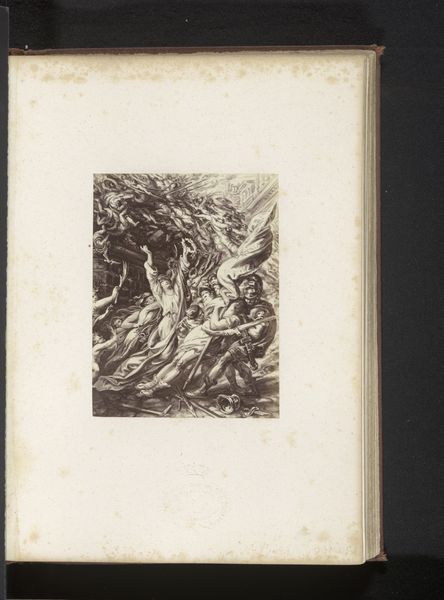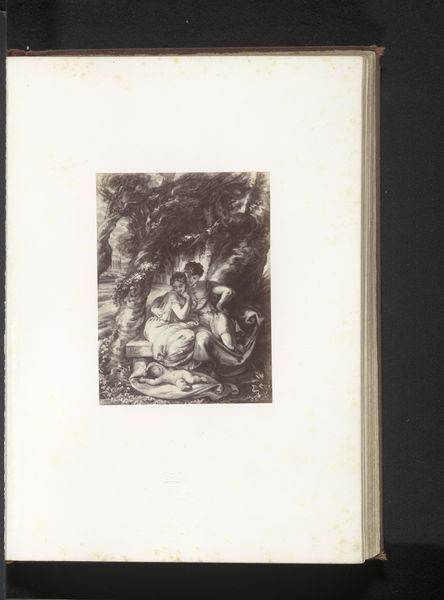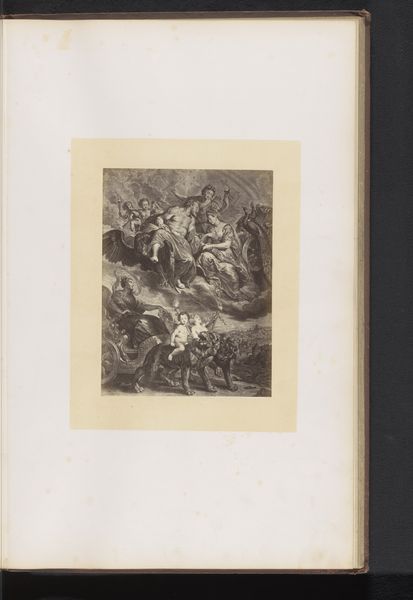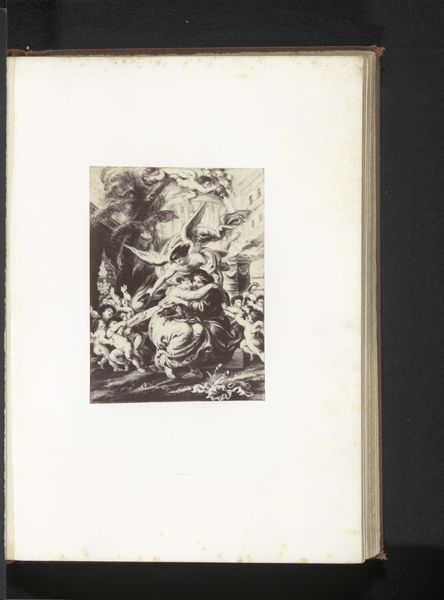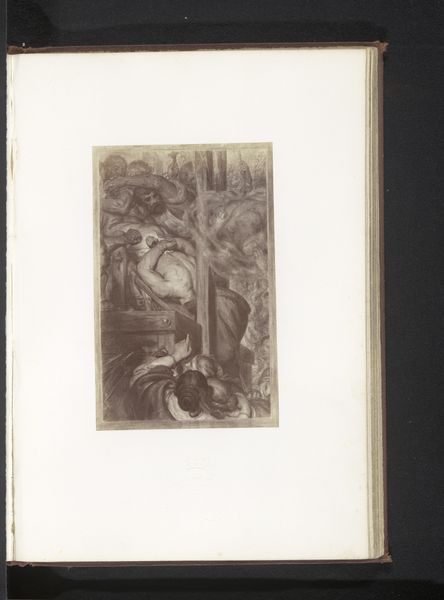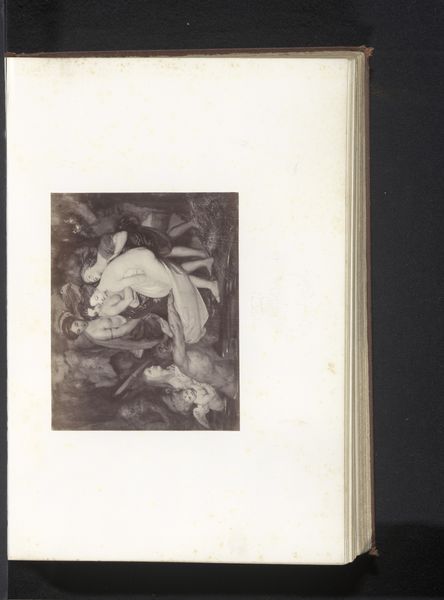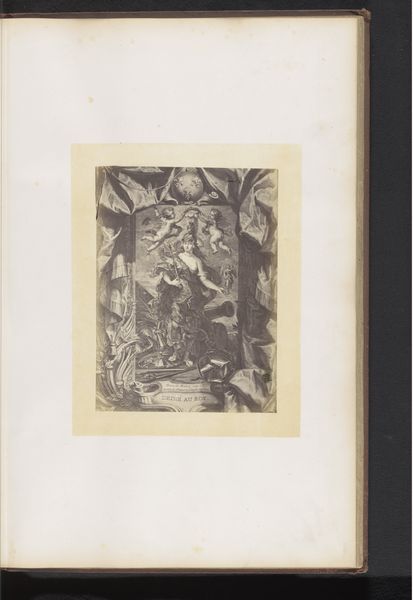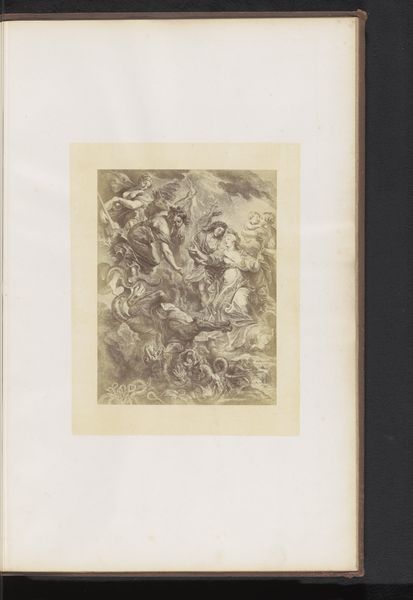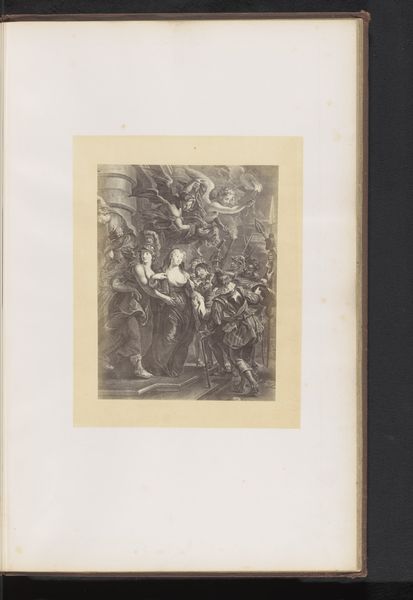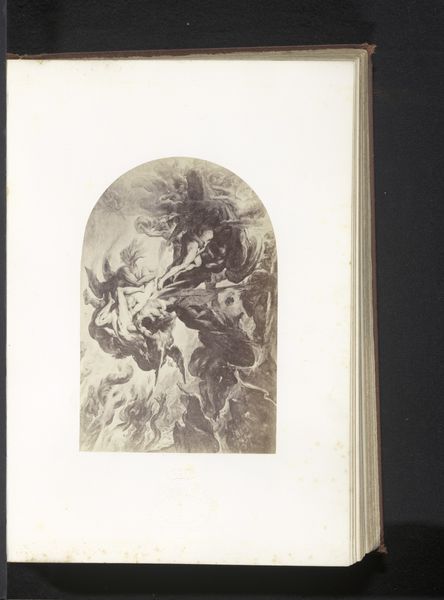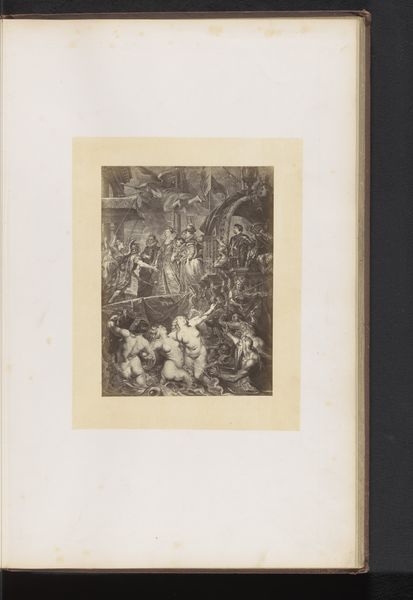
Fotoreproductie van In familie V: Het leven en de dood door Antoine Wiertz before 1868
0:00
0:00
#
aged paper
#
homemade paper
#
white palette
#
paper texture
#
unrealistic statue
#
carved into stone
#
folded paper
#
thick font
#
white font
#
historical font
Dimensions: height 144 mm, width 107 mm
Copyright: Rijks Museum: Open Domain
Editor: Here we have a photographic reproduction, "Fotoreproductie van In familie V: Het leven en de dood door Antoine Wiertz," made before 1868 by Edmond Fierlants. It's quite striking. There's this contrast between what appears to be youthful play and figures that seem much older and contemplative. What symbolic weight do you think this photograph carries, especially considering its title translating to "Life and Death in the Family"? Curator: Indeed, it's a potent juxtaposition. Notice how the figures representing 'life'—these playful putti—are positioned towards the viewer, demanding immediate attention. In contrast, the shadowy figures in the background, representing mortality, recede into the darkness. What emotional impact does that deliberate positioning have on you? Editor: It definitely creates a sense of immediacy for the "life" aspect, making it feel very present and vibrant, while death feels distant, like something looming in the future. Curator: Precisely! It also evokes a kind of collective memory around family lineage – the awareness that life and death are intertwined threads. The "family" aspect is emphasized. Think about the era this photograph was created: death was far more present in daily life. How do you think that awareness shaped the artist's choices in depicting this allegory? Editor: Maybe they were trying to offer comfort, by showing death as part of a cycle, balanced by life and playfulness? It makes the concept of mortality seem a bit less frightening, almost… integrated. Curator: An astute observation. By visually binding life and death within the "family," the artist potentially sought to neutralize its sting, reminding the viewer that mortality doesn't exist in isolation, but rather is one facet of a larger, continuous narrative. It's powerful, really, the image-as-memory-device that keeps the narrative alive. Editor: It’s fascinating how photographic reproductions allowed wider access to such complex allegories. I definitely have a deeper appreciation for it now, seeing the symbolism connecting life and death in the family. Curator: And I’m glad that this dialogue might invite us all to re-evaluate visual culture.
Comments
No comments
Be the first to comment and join the conversation on the ultimate creative platform.
